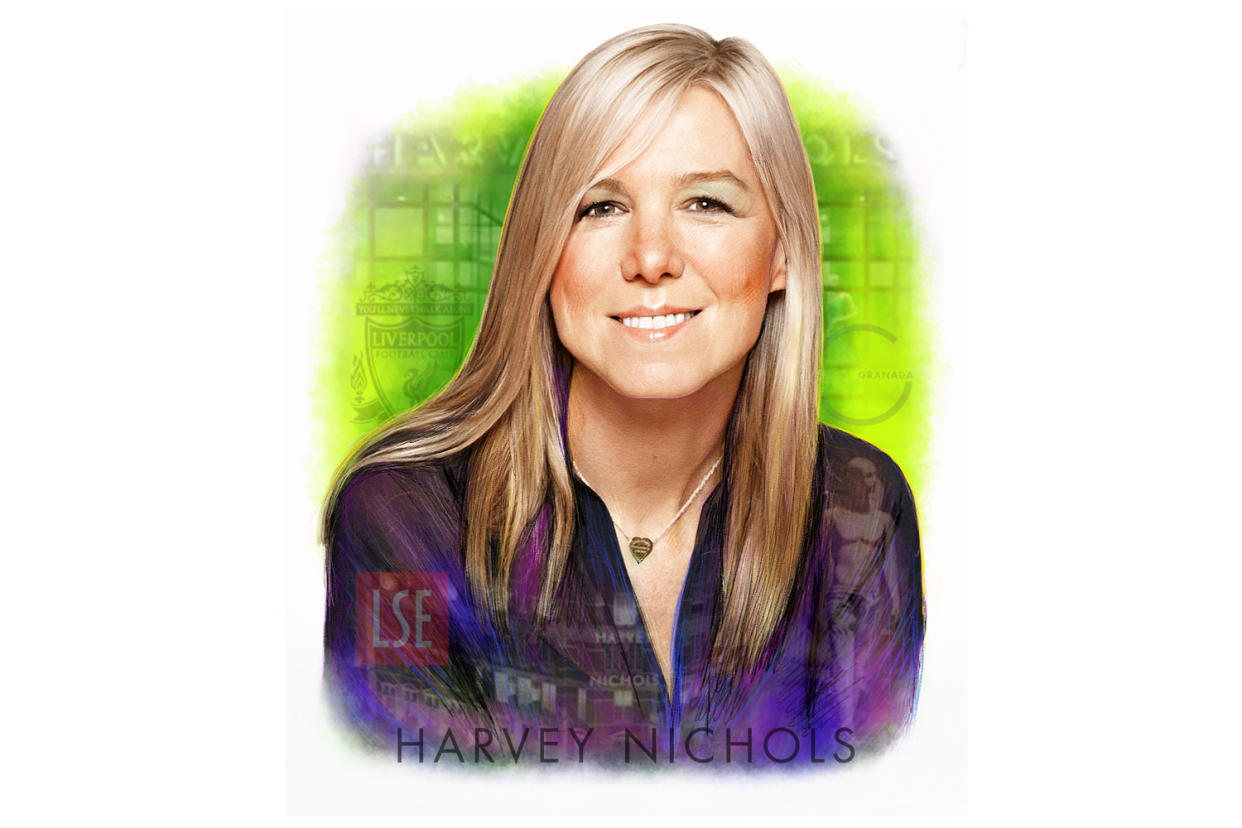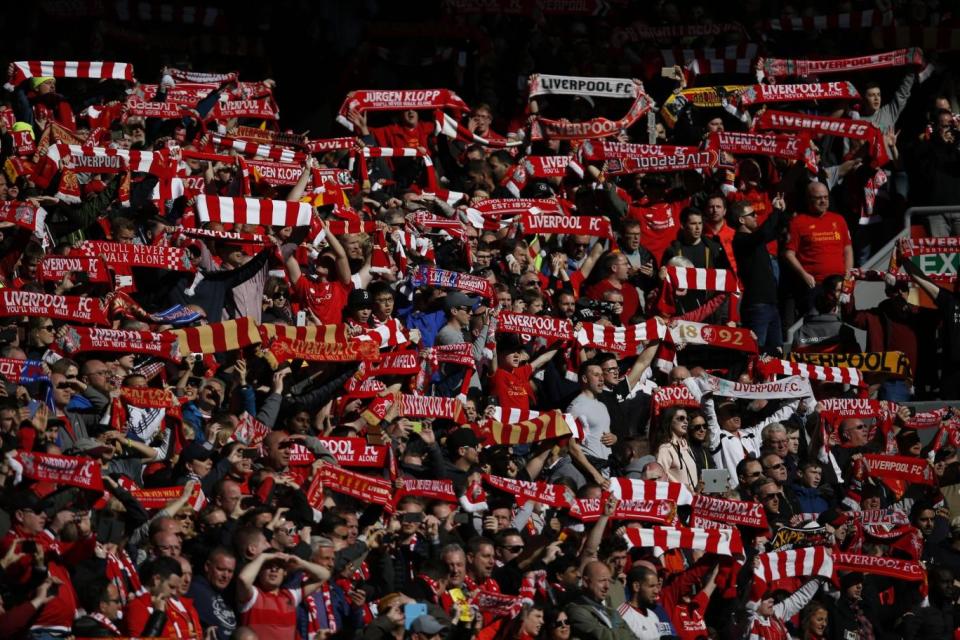Stacey Cartwright: Ice boxes and beauty bars — the Harvey Nichols chief on injecting new life into the retailer

It’s nearing the end of Friday and instead of hitting the pub, I’m about to find out what 90 below freezing feels like. I’ve been quizzed about my history of heart attacks, signed a disclaimer and donned my specialist gear. But I’m not on the brink of a life-endangering expedition, I’m in Harvey Nichols.
More precisely, I’m tucked away on the Knightsbridge boutique’s fourth floor, about to spend three minutes in what’s known as the 111CRYO chamber. Blasts of icy air promise to turbocharge my heartbeat, send adrenaline coursing through my veins and torch up to 800 calories.
It’s a hit with Wall Street bankers and sportsmen — Cristiano Ronaldo has one at home — and is one of the bells and whistles Stacey Cartwright has installed in the luxury retailer since becoming chief executive in 2014.
I’d met the striking blonde — in her strappy stilettos, she must top six feet — a few hours earlier in front of another of her additions, the Beauty Lounge. The open and airy ground-floor space, adorned with gold lamps and marble-effect wallpaper, is open for hair-coiffing, nail-buffing and brow-plucking until 10pm on weekdays.
The 53-year-old looks as though she could have been a client there herself, glamorous as she is with curled locks and shimmering make-up. And as you might expect from a former Burberry finance director, she’s dressed impeccably in a silky, metallic skirt and delicate cream-coloured top.
She launches straight into describing her turnaround: “Harvey Nichols had fallen off radar screens — not because it had done anything wrong, but it hadn’t reinvented itself for the next stages of growth in the retail market.
“There needed to be something different to bring you to the store. We decided it had to be about experiences and it had to be about fun. It had to feel like somewhere I could stop in for half an hour or where I could spend the day with the other half or the kids.”
As well as the Beauty Lounge, that has meant a total revamp of two floors of menswear and the arrival of a subterranean cocktail bar and men’s grooming parlour.
The accessories department has also had a facelift. Instead of the traditional shops-within-shops model employed by rivals Harrods and Selfridges, subtle signs identify designer ranges, which can be moved around the floor at the store’s discretion.
“The thinking is that it doesn’t feel intimidating when you go and browse in the way it might do in another environment,” Cartwright says.
The 10-month refurbishment that kept the front doors out of action has taken its toll financially. Sales edged up just 1% to £194 million and profits slid almost 50% to £3 million in the 2015-16 financial year. By comparison, Harrods sales grew 4% and Selfridges’ 5% in their last financial years.
GlobalData analyst Kate Ormrod says Harvey Nichols remains overshadowed by the pair: “A lack of differentiation and an inability to drive awareness outside its core loyal shoppers, especially among tourists, continues to hinder overall sales growth, making market share gains hard to come by.”
Cartwright is hopeful, however. The financial year just gone was its “trough” in performance and the present one will see a return to profitable growth. International shoppers are currently responsible for that although domestic customers are “perhaps being a bit more cautious but still spending more overall”.
She plans to take things up a gear by expanding online. She sees much promise in Marketplace, an initiative of the Harvey Nichols website that makes expanded ranges which don’t fit in its stores available online. Purchases via Marketplace still earn loyalty points for customers — all registered on an app — who can exchange them for cash rewards or “prizes” such as champagne for two on the fifth-floor terrace.
She’ll also start overhauling womenswear and restaurants, and could add more overseas branches. There are already seven abroad — with one to come in Doha — and domestic branches in Birmingham, Manchester, Edinburgh, Leeds, Liverpool and Bristol.
Of course, such upgrades require further investment. Cartwright insists the boutique’s owner, Hong Kong billionaire Dickson Poon, is supportive. “We WhatsApp. We have a call every month to update. A brand rejuvenation project like this is much better to do with an owner who is excited about what we’re doing.”
But Cartwright would know how to handle a more belligerent boss. Lord Allen, the former boss of ITV who worked with her at Granada, recalls her powers of persuasion. “At a cowboys and Indians themed Christmas party, I was there in my stetson,” he says. “Other people did not know Stacey had decided to resign and I was keeping her to her six months’ notice.
“She dragged me onto the dance floor and said I was not getting off until I reduced it to three. We danced for about an hour.” Her tactic worked.
Allen adds that Cartwright, who “always knew more than her bosses”, is a “strong woman” but a “big softie” at heart.
The latter quality led to her lifelong love affair with Liverpool Football Club. Despite growing up in Warwickshire, Essex, Surrey and then London, Cartwright chose the Merseyside team after watching their 1971 FA Cup defeat to Arsenal. “I felt very sorry for them. There were tears on the pitch.”

Professionally, Cartwright describes her style simply as “getting on with it”. She developed a knack for that at Granada, the company she joined soon after graduating from the London School of Economics.
Having followed in the footsteps of her finance director father, one of her first roles was looking after directors’ expenses, but she soon got herself noticed working on an emergency rights issue and rocketed up the ranks during her 11-year stint, ending as commercial director.
Her now grown-up children arrived in quick succession — at one point she had three under four — and Cartwright always made a point of arranging her schedule around her family.
“I remember one of my bosses at Granada preferred to work later in the day and would look with dismay at 6.30pm as I packed up. He’d say, ‘I’m ready to go through this work now,’ and I’d say, ‘I have to go and put my kids to bed. I’ll be in at 8am tomorrow if you want to go through it then.’ I think maybe I was an outlier but that was just the way it had to be.”
She finally left Granada in 1999 to lead the finance department of Prudential spin-off Egg before finding her way to Burberry in 2004. There she was part of a power trio with chief executive Angela Ahrendts and designer Christopher Bailey. She talks fondly of her nine years there, which saw the brand turned into a global and digital force, and especially of her relationship with Ahrendts and Bailey. “Angela always said that Christopher was the most commercial creative person and I was the most creative commercial person. We complemented each other.”
She’s kept her strong bond with Burberry and is still in touch despite Ahrendts now living in the US, where she runs Apple’s retail business. She says she “keeps an eye” on Burberry but it’s clear she doesn’t envy Bailey, who recently relinquished the top job after criticism from shareholders over his dual role as chief executive and creative director.
“I’m interested in Plcs from the point of view of a non-executive, but I’m not going to go back to the cycle of reporting… agency and press briefings. It takes a lot away from running a business.”
She counters the pressures of her present job — her last executive role, she says — by cycling around Richmond Park with her partner (a former professional rugby player), and friends. And she occasionally steps into the 111CRYO chamber, listening to Santana during her sessions in the shower cubicle-like booth.
Speaking of which, it’s time for me to face the freeze. After turning down the machine operator’s offer to exercise with him in my three minutes, I choose a soundtrack of Sia’s Cheap Thrills and head into the mist. The result? I don’t feel the much talked-about wave of exhilaration but some aches and pains have eased and I definitely feel more calm and content, Zen even.
With a long to-do list to restore Harvey Nichols to its former glory, it’s no wonder Cartwright is a fan.

 Yahoo News
Yahoo News 
